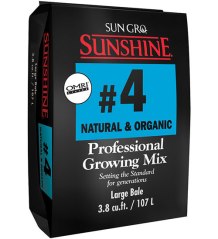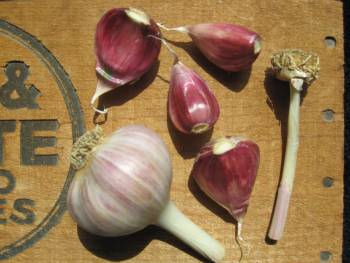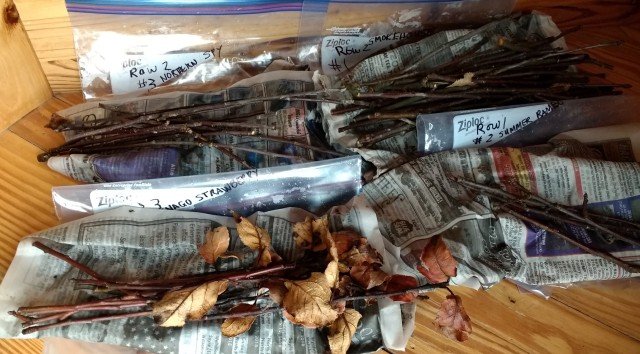In case you were wondering, a steely-eyed missile man is A NASA astronaut or engineer who quickly devises an ingenious solution to a tough problem while under extreme pressure. Similar to those of us who farm, and need to make quick decisions on the fly.
And, much is happening this week. First off, Organic Inspection work has begun for the 2018 season, on certified organic farms around the regional area. Just so you can sleep better at night, know that organic integrity checks are being made. Rest assured that there is a former Steely-eyed Missile Man checking those organic regulations accurately and thoroughly. All to the benefit of the consumers who prefer certified organic items as an integral part of healthy eating.
A point occurred me recently. A farmer mentioned that a vegetable seed supplier told them that … “It’s ok for organic farms to buy untreated non-GMO seeds because they the same as organic.” In fact, often this sales claim is flat-out untrue. And worst yet, it might be intentionally done and meant to mislead the organic-minded buyer. Especially when there is an equivalent organically produced variety available. For example, we prefer to grow a pickling cucumber, called Jackson Supreme, because of it’s shape, good yielding traits and broad range of disease resistance. After an exhaustive good-faith seed search, we found that this cucumber is not available in an organic variety. As a result of our documented seed search of at least three seed sources, we purchased the conventional untreated Jackson Supreme seeds from Johnny’s Selected Seeds. However, for our preferred winter squash variety, Delicata, organic seeds are commercially available at Johnny’s. So, we therefore purchased the organic Delicate seeds. And, GMO seeds are never allowed in organic production. And, prohibitive conventional seed treatments are not allowed in organic production either. And lastly, some organic seeds are treated with organically approved coatings, such as naturally occurring inoculants, and therefore are allowed for organic production.
 On a slightly different note, today we ordered a new bale of seed start mix. Happily, it was found that our favorite organic SunGro medium still is available. The Sun GRO Sunshine Mix was recommended to us by internationally recognized potato and tomato breeder Tom Wagner aka “Tater-Mater” for seed starts … “where high air capacity and fast drainage are needed: during winter months, with water or salt sensitive crops, or where frequent leaching is required.” We ordered our last bale in the winter of 2015. We had just enough from that old bale to get our tomato and cucumber seeds started this spring resulting in 4 trays of tomatoes and 2 trays of cucumbers. So, it begins anew.
On a slightly different note, today we ordered a new bale of seed start mix. Happily, it was found that our favorite organic SunGro medium still is available. The Sun GRO Sunshine Mix was recommended to us by internationally recognized potato and tomato breeder Tom Wagner aka “Tater-Mater” for seed starts … “where high air capacity and fast drainage are needed: during winter months, with water or salt sensitive crops, or where frequent leaching is required.” We ordered our last bale in the winter of 2015. We had just enough from that old bale to get our tomato and cucumber seeds started this spring resulting in 4 trays of tomatoes and 2 trays of cucumbers. So, it begins anew.


 Well it turns out this year, our potato tubers will get planted in
Well it turns out this year, our potato tubers will get planted in 


 On a slightly different note, today we ordered a new bale of seed start mix. Happily, it was found that our favorite organic SunGro medium still is available. The Sun GRO Sunshine Mix was recommended to us by internationally recognized potato and tomato breeder Tom Wagner aka “Tater-Mater” for seed starts … “where high air capacity and fast drainage are needed: during winter months, with water or salt sensitive crops, or where frequent leaching is required.” We ordered our last bale in the winter of 2015. We had just enough from that old bale to get our tomato and cucumber seeds started this spring resulting in 4 trays of tomatoes and 2 trays of cucumbers. So, it begins anew.
On a slightly different note, today we ordered a new bale of seed start mix. Happily, it was found that our favorite organic SunGro medium still is available. The Sun GRO Sunshine Mix was recommended to us by internationally recognized potato and tomato breeder Tom Wagner aka “Tater-Mater” for seed starts … “where high air capacity and fast drainage are needed: during winter months, with water or salt sensitive crops, or where frequent leaching is required.” We ordered our last bale in the winter of 2015. We had just enough from that old bale to get our tomato and cucumber seeds started this spring resulting in 4 trays of tomatoes and 2 trays of cucumbers. So, it begins anew.




